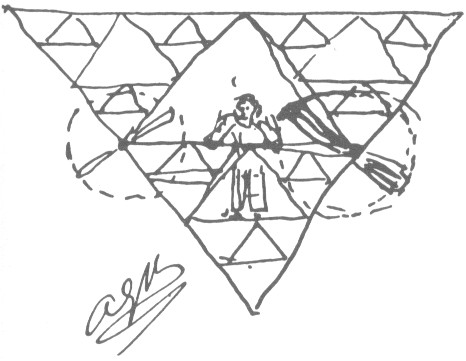
background and Summary


|
background and Summary |

|
|
In 1978, Memorial University of Newfoundland's (MUN) former Pro-fessor of Engineering, Tom Kierans, became the first Director of the Al-exander Graham Bell Institute at Nova Scotia's College of Cape Bre-ton. At about the same time, oil was discovered in the Newfoundland Grand Banks seabed. Options for safe and profitable recovery of this resource in such a difficult marine environ-ment attracted wide public attention. At the Bell Institute, Kierans noted that Alexander Graham Bell had been interested in the subject of aerial locomotion even before he invented the telephone and, in the early 1890's, began to experiment with kites. At a time when the shape of modern aircraft was unknown, Bell believed that heavier-than-air flight required a design similar to a kite. Such a structure needed to be light enough to be supported in the air and pulled forward by an engine-driven propeller creating an artificial wind. This man-carrying structure also needed to be strong and stable enough to carry the engine and passengers. Bell's theory was dif-ficult to put into practice at that time because there were no suitable en-gines or kite structures sufficiently strong to support such a system. To provide a suitable structure, Bell became interested in the tetrahedral cell. His work to apply such cells to man-carrying kites is described in a Parks Canada publication entitled "Alexander Graham Bell National Historic Park". It reads as follows: "The Tetrahedral Cell In 1901 Bell surmounted this obsta-cle by developing the tetrahedral cell, an almost perfect engineering construction, extremely light and extremely strong." |


"He arrived at this design by trial and error after experimenting with every conceivable shape, circular, polygon, triangular. With the tetra-hedral design he progressed grad-ually to bigger and stronger kites. The early frames of slender spruce gave way to stronger ones and eventually to sturdy durable alum-inum tubing. Beinn Bhreagh [Bell's Baddeck home] became the centre of a most unusual industry as workmen and seamstresses turned out thousands of colourful silk-covered kite cells." In 1975, Harold Snyder, P. Eng. who was Project Manager at Churchill Falls Hydropower Plant construc-tion in Labrador, became Director of MUN's Centre for Cold Ocean Re-source Engineering (C-CORE). Tom Kierans, who had also helped to build Churchill Falls Power Plant, suggested to Snyder that Bell's tetrahedral cell for aircraft should be considered in the design of marine structures for use in Grand Banks sub-sea oil recovery |
Kierans and Snyder then worked together at MUN to develop criteria for the application of Bell's tetrahed-ral cells to a suitable Grand Banks floating structure. After due consid-eration, it became apparant that the delta shape offered most promise for inherent safety, strength, stability, and buoyancy. Design and evaluation studies into the delta shape were conducted at MUN from 1981 to 1991. During that period. about 100 engineering stu-dents were employed at MUN's Engineering Department wave tank. With limited financing, Kierans and Snyder's work was confined to basic structural design and to a lesser extent, economic evaluation. In that period, several models were built and tested in MUN's Engine-ering Department wave tank and the National Research Council's (NRC) new IMD tank. The Deltaport design criteria, devel-oped at MUN, calls for its construc-tion and maintenance at sea, capa-bility to change work sites, dynamic positioning, shallow site mooring, and downwind harbour entry. It seems clear that to improve ocean supervision, environment research, seafood production, sub-sea oil, gas, and mineral recovery, as well as provide alternative shelter for coasts and low island areas from changing sea levels, such floating sea and air bases will inevitably be essential. The goal of this submission is to outline criteria and design to date for a Newfoundland Deltaport like that developed by Kierans and Snyder and to suggest future research. This will hopefully lead to eventual construction of many Newfoundland Deltaports for use around the world. |